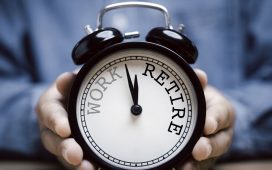When people reach state pension age, they might encounter problems with their tax code as the Department for Work and Pensions (DWP) does not operate Pay As You Earn (PAYE) on one’s state pension.
If people fail to contact HMRC, it could leave them paying more tax than they need to.
Age UK stated that one of the top 10 common tax mistakes people make is forgetting to tell HMRC that they are about to retire.
They encourage people to make sure their tax office knows in good time if they expect to start receiving a pension in the next few months so that they can sort out their tax code.
This is especially vital for people who are self-employed.
HMRC will usually contact people to explain how they worked out their individual tax code if their tax code changes.
The numbers in one’s tax code tell their employer or pension provider how much tax-free income they get in that tax year.
HMRC works out individual numbers based on their tax-free Personal Allowance and income they have not paid tax on (such as untaxed interest or part-time earnings).
They also consider the value of any benefits from one’s job such as a company car.
When people retire, they may be moved onto a tax code with the letter BR.
The Government website explains that BR means all one’s income from this job or pension is taxed at the basic rate (usually used if they’ve got more than one job or pension.
The Department for Work and Pensions (DWP) notifies HM Revenue & Customs (HMRC) automatically once someone has decided to claim their state pension.
However, people should also let HMRC know, so that they can ensure their records are correct.
This automatic notification should happen about five weeks before the date when someone reaches state pension age.
The Low Incomes Tax Reform Group (LITRG) explained one of the main causes for tax code problems is that the DWP does not operate Pay As You Earn (PAYE) on their state pension.
Their website states: “This forces the PAYE system to collect tax on two sources of income through one tax code (assuming you have another PAYE source of income).
“For example, you may pay tax on both your state pension and an occupational pension through the tax code issued for your occupational pension.
“In the first year, you get your state pension, you will more than likely receive payment for only part of the year.
“HMRC will normally include a full year’s pension in your coding notice and then tell your employer or pension payer to use a special type of code – called a week 1 or month 1 code – to make sure that you only pay the right amount of tax.”
It should be noted that people do not get a form P60 after the end of each tax year for their state pension, so they must keep their own records of their state pension income.
If people start to receive more than one occupational or personal pension, they will all need their own tax code. Britons are urged to check each of them are correct to avoid overpaying or underpaying.
LITRG continued: “Depending on how you take money out of your pension, you may not necessarily pay the right tax at the right time, so keep an eye on how much you are paying.
“If you take money flexibly from your pensions, you might pay too much (or sometimes not enough) tax when you take the money out.”
David Woodward, managing director of Woodward Financials, told Express.co.uk : “When approaching retirement, it is always a good idea to request a BR19 state pension forecast which can be done online. Your pension provider is likely to inform HMRC when you start taking pension benefits but don’t expect your employer to do this on your behalf.
“Most employers will just issue a P45 once leaving the company as many people may continue to work in a reduced capacity with another employer in later life.”







